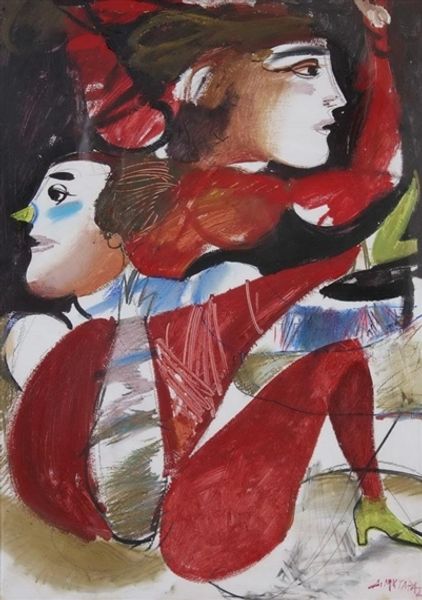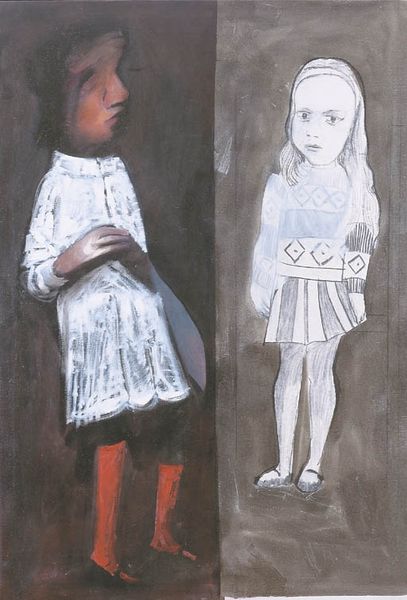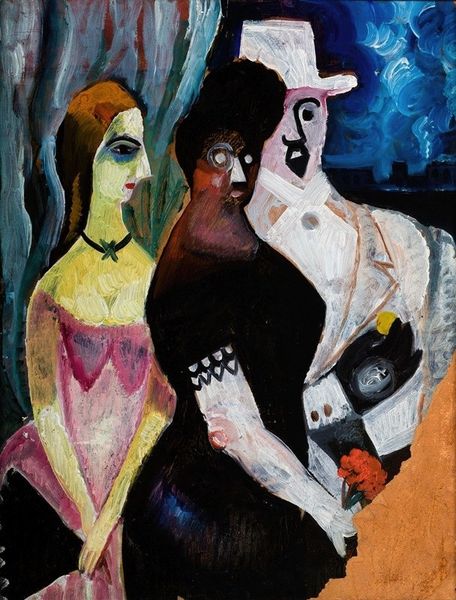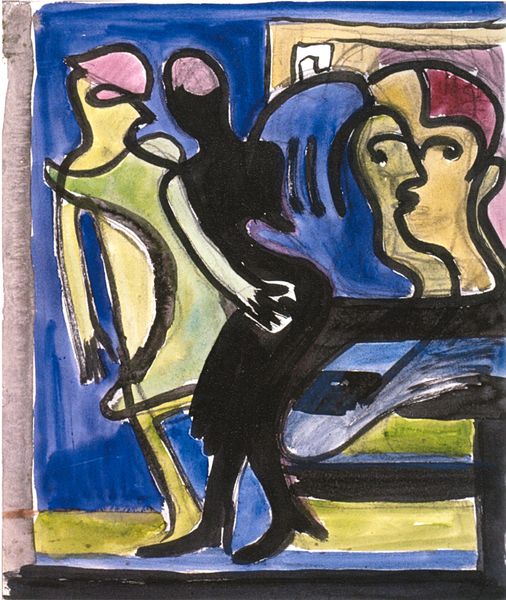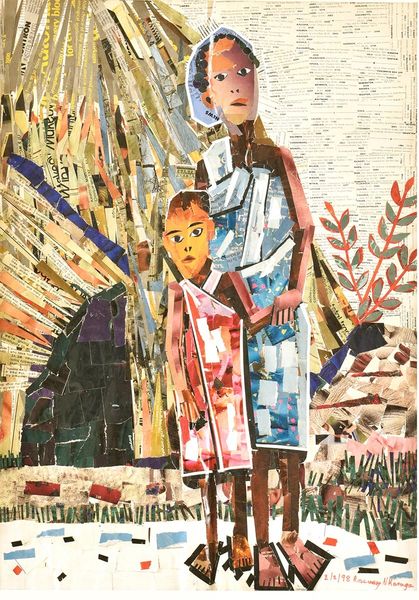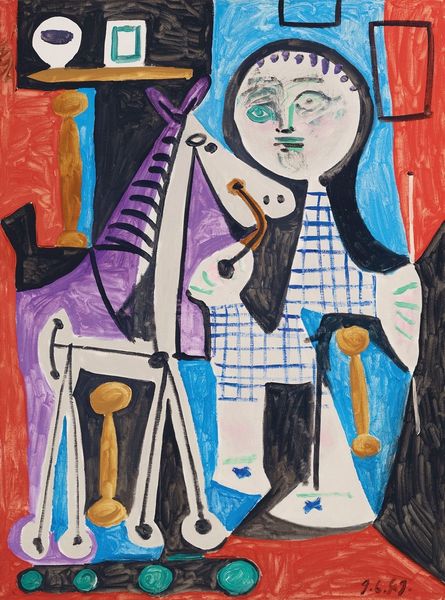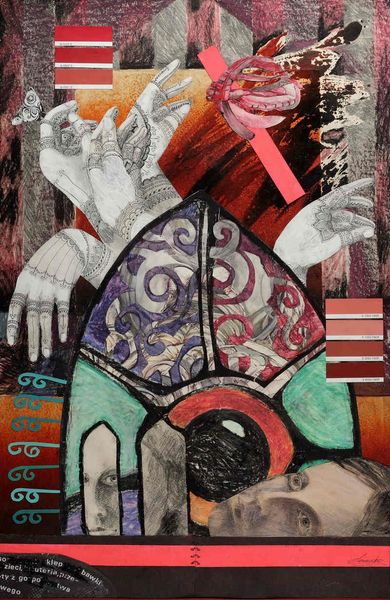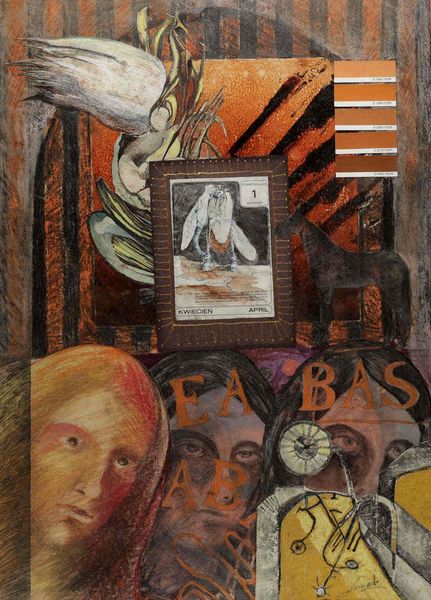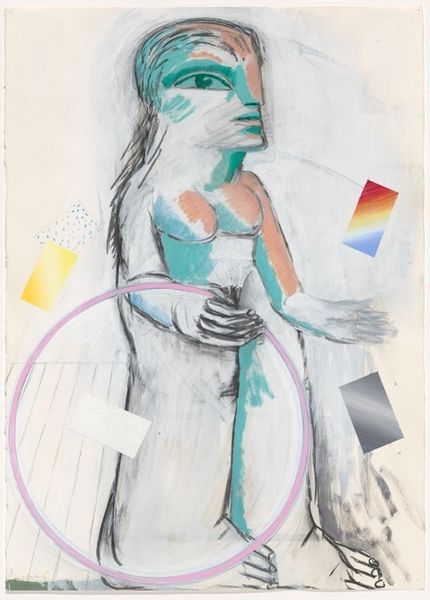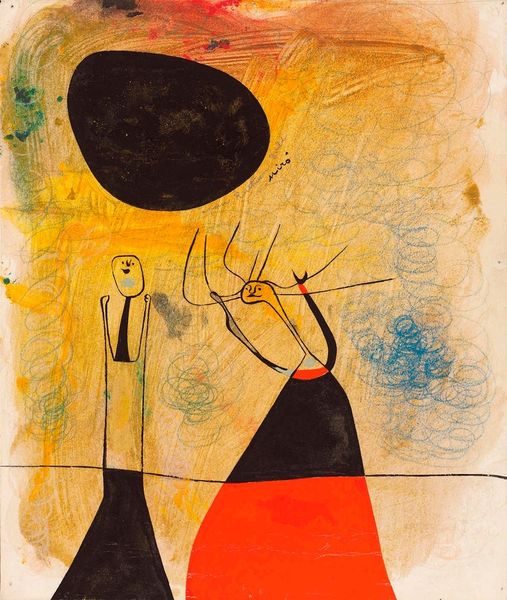
painting, acrylic-paint
#
portrait
#
painting
#
folk art
#
acrylic-paint
#
figuration
#
acrylic on canvas
#
folk-art
#
naive art
Copyright: Charles Blackman,Fair Use
Charles Blackman asks us to tumble down the rabbit hole into childhood in Always Tea Time. The mid-twentieth century was a time of upheaval in Australian art. The influence of European modernism arrived with the immigrants who fled the war and Blackman was interested in these currents. He also identified with the outsider, depicting the lives of alienated figures in the city, and the dreamlike quality of this image brings this sensibility to the fore. The painting references Lewis Carroll's Alice in Wonderland, a story that captured the sense of a world turned upside down. In post-war Australia, many people felt displaced and adrift, and the Mad Hatter's tea party becomes a fitting metaphor. To understand more about how Australian artists negotiated their place in the world at this time, we can look to historical sources like exhibition catalogues, artists' letters and diaries, and the records of arts funding bodies.
Comments
No comments
Be the first to comment and join the conversation on the ultimate creative platform.
